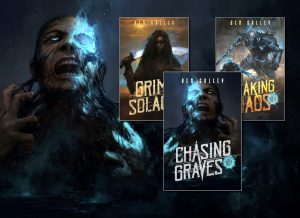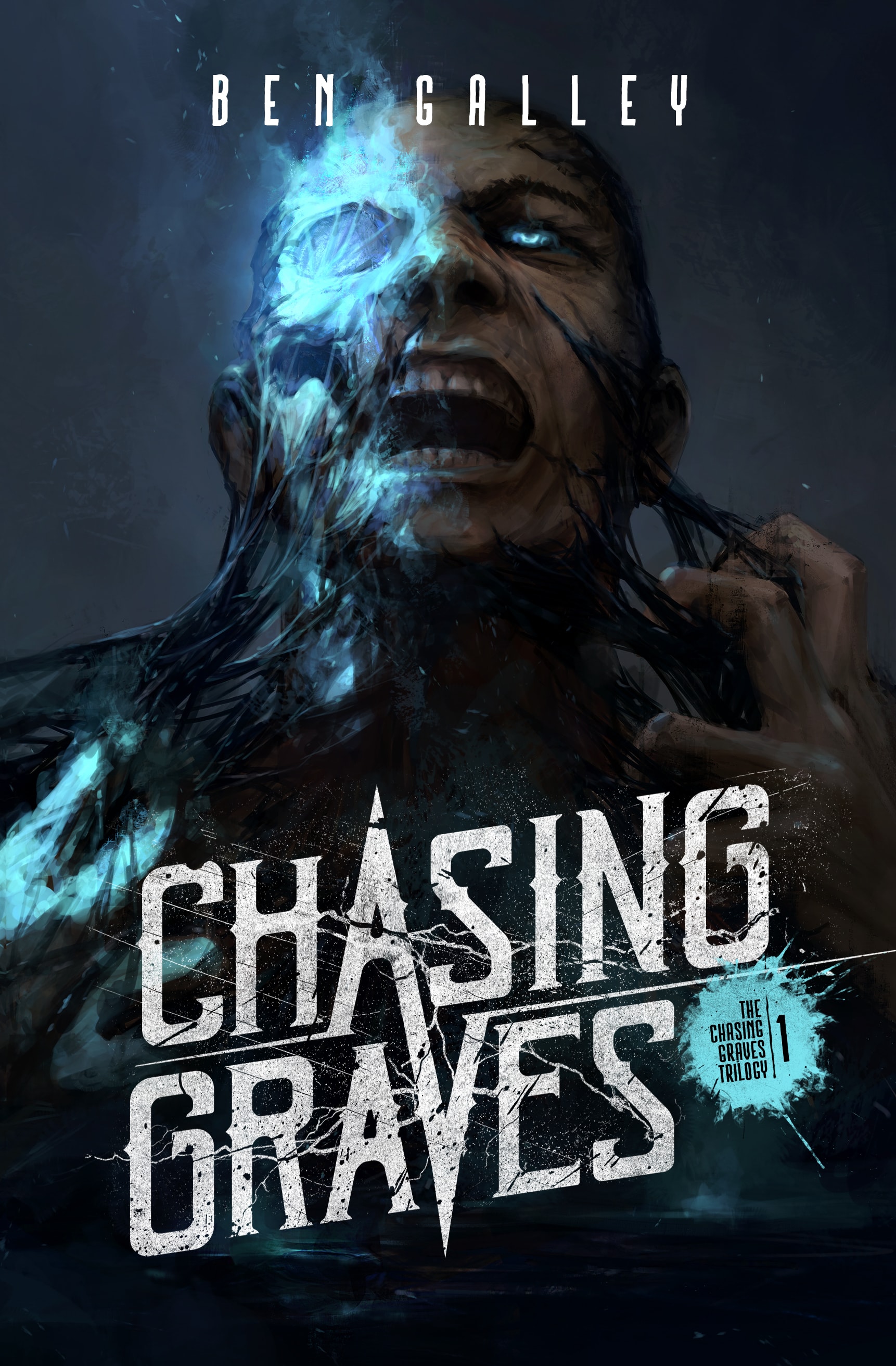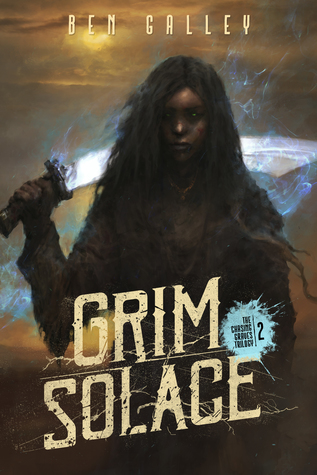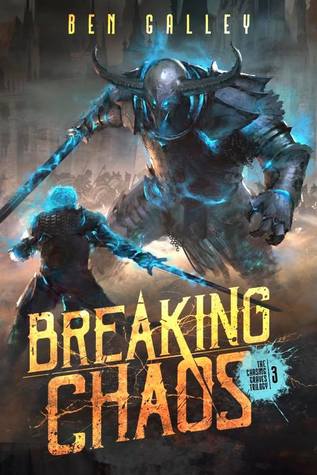The CHASING GRAVES Trilogy by Ben Galley (Series Review)

I was quite impressed with Galley’s standalone fantasy The Heart of Stone, so I had high expectations for the Chasing Graves trilogy. I’m happy to say that those expectations were exceeded in every way. The author released all three books in the trilogy within a span of a few months, and perhaps that’s why I think of the series as one big story, rather than three smaller ones. That’s how I’m going to talk about them. Consider this a review of the entire set.
I’m a curmudgeon when it comes to prose quality, and I absolutely love the way Galley crafts his sentences, his images, his metaphors and similes. Every line was a joy to read, which for me just buoys my brain as it soaks in and enjoys the plot and characters. I may have said this in my review of The Heart of Stone, but I find Galley’s writing to be highly reminiscent of Josiah Bancroft, one of my absolute favorite authors.
The tower wore its windows like old pox scars, deep and sunken into the stone.
As for the story itself, it’s enthralling. I’m not spoiling much by saying that the main character, locksmith extraordinaire Caltro Basalt, is murdered almost immediately after the start of the first book. But the world of Chasing Graves is one where the souls of the recently dead can be captured as ghosts and enslaved by the unscrupulous and/or powerful. As such, Basalt finds himself bound and conscripted, whereupon he becomes a pawn in a delightful game of power politics played by various nobles, merchants, bankers, and soul-stealers.
One of the great tricks Galley manages in this tale is giving Basalt just enough agency and personality to sustain him as the primary protagonist (and the only one whose chapters are narrated in first-person), despite that he’s seldom in control of his own fate or freedom. He falls into the “loveable rogue” archetype, constantly balancing an innate sense of justice against his own considerable greed and laziness.
“Whys and what-ifs plague a soul throughout life and in death. It is human to mourn the past, and to curse the way time slips through our fingers like sand, impossible to catch or reclaim. But there comes a moment—in my experience, usually in old age, the gutters, or in last, painful minutes—where a soul must let go and surrender to time’s nature. I had heard a scholar once call it ‘time’s arrow.’ Judging by how it seemed to me since Kech’s knife, I’d have called it time’s dirty great big lance.”
There are other POV characters, most notably the enigmatic Nilith, first seen dragging both the corpse and the ghost of her dead husband across a desert. Her strong, no-nonsense approach to her situation (not to mention her martial prowess) give her chapters a much different feel than Basalt’s. For most of the first book the two narratives seem unrelated, but the connection, once revealed, is a wonderful moment. A handful of other characters get some POV time, but Nilith and Basalt are clearly the stars of the show, and I never tired of reading about what happened to them.
The world itself is an alt-history Egypt, and the huge city of Araxes, where most of the story takes place, is like a character unto itself. By the time the third book ended I felt like I had lived in it, Araxes having evoked the same strong sense of place as Scott Lynch’s Camorr and Terry Pratchett’s Ankh-Morpork. And as for world-building, the setting of Chasing Graves is of the sort I like to refer to as “relentless.” Every chapter, every scene, relies upon and is strengthened by the unique characteristics of this odd society, in which enslaved souls are both a currency and an indication of power. It’s a grimdark world out there, full of crime, slaves, and backstabbing, but it never gave me a feel of inexorable bleakness the way (for instance) Richard Nell’s Kings of Paradise did. This was a fun series to read.
So… any caveats to all this gushing praise? Well, uh…I guess I should warn readers that there’s a bit of scatological humor. And the first two books feel very much like parts 1 and 2 of a 3-part story, without particularly strong wrap-ups of their own. But if you go into the series with that mindset, you’re in for a treat.



